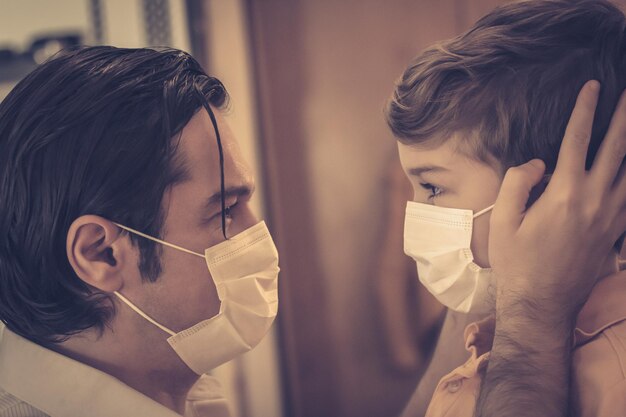Understanding Mumps Transmission: What You Need to Know
Catching a contagious disease is something everyone wants to avoid, and understanding how mumps is transmitted can help you make informed decisions about your health. Although the vaccine has significantly reduced cases of mumps, occasional outbreaks still occur. With this in mind, knowing the fundamentals of how mumps spreads is critical for personal and public health.
What is Mumps?
Mumps is a viral infection, primarily impacting the salivary glands, located near your ears. This condition can cause swelling in one or more of these glands, leading to the signature "puffy cheeks" appearance often associated with mumps. While typically a mild illness in children, mumps can result in more severe complications in adults.
Key Symptoms of Mumps
- Swollen, painful salivary glands on one or both sides of your face.
- Fever and headaches.
- Muscle aches and fatigue.
- Loss of appetite.
While these are the common symptoms, not everyone infected with the virus will manifest these signs, which is why it’s essential to understand mumps transmission to prevent its spread.
How is Mumps Transmitted?
The Role of the Paramyxovirus
Mumps is caused by the paramyxovirus, a virus that is highly contagious and easily spread from person to person. Understanding the primary ways this virus is transmitted can help in effectively containing its spread.
Modes of Transmission
Respiratory Droplets: The most common way mumps spreads is through respiratory droplets. When an infected person sneezes, coughs, or even talks, they release tiny droplets into the air containing the virus. If these droplets are inhaled by someone nearby, that person is at risk of contracting mumps.
Direct Contact: Close physical contact, such as kissing or sharing drinks and eating utensils, can result in the transmission of the virus. This is particularly concerning in close-knit environments like families or schools.
Surface Contamination: Although less common, touching surfaces contaminated with the virus and then touching your face – especially the nose or mouth – can lead to infection.
High-Risk Situations
Certain environments and situations heighten the risk of mumps transmission:
- Crowded settings like schools, dormitories, and public transportation.
- Close-contact activities such as sports or other group activities increasing face-to-face interaction.
- Household exposure, particularly if one family member contracts the virus.
Prevention Strategies
Preventing mumps transmission involves a combination of vaccination, personal hygiene, and awareness of the risk situations.
The Importance of Vaccination
Getting vaccinated is the most effective way to prevent mumps. The MMR vaccine (measles, mumps, and rubella) is typically administered in two doses during childhood. This vaccine is highly effective; however, while it significantly reduces the risk, no vaccine offers 100% protection.
Vaccine Effectiveness
- First dose: Provides about 78% protection against mumps.
- Second dose: Increases effectiveness to about 88%.
Good Hygiene Practices
Personal hygiene plays a pivotal role in preventing the spread of mumps. Here are some simple practices to reduce the risk:
- Frequent hand washing with soap and water.
- Using alcohol-based hand sanitizers when soap isn’t available.
- Practicing good respiratory etiquette, such as covering your mouth and nose with a tissue or your elbow when coughing or sneezing.
Minimizing Risk in High-Risk Settings
If there's an outbreak of mumps or you’re in a high-risk environment, consider these additional precautions:
- Avoid sharing personal items like cups, utensils, and used tissues.
- Clean and disinfect surfaces regularly.
- Encourage vaccination and awareness in your community or workplace.
Mumps Complications: Why Prevention Matters
While mumps is generally mild, especially in children, it can lead to severe complications, underscoring the importance of taking preventive measures seriously.
Potential Complications
- Orchitis: Swelling of the testicles in males who have reached puberty.
- Oophoritis: Swelling of the ovaries or mastitis (breast tissue swelling) in females.
- Encephalitis or meningitis: Inflammation of the brain or the tissue covering the brain and spinal cord.
- Hearing loss: Though rare, mumps can lead to permanent deafness.
Recognizing the complications associated with mumps reinforces the need for preventive measures, especially the widespread adoption of vaccination.
What to Do If You Suspect Mumps
If you suspect you or someone else might have mumps, particularly during an outbreak, here are the recommended steps to take:
- Isolate the individual: Stay away from school, work, or community gatherings to prevent spreading the virus.
- Consult a healthcare provider: While this article does not offer medical advice, seeking professional guidance can help confirm the diagnosis and discuss care options.
- Inform close contacts: Notify those around you so they can take appropriate precautions.
By taking these steps promptly, you can help contain the spread of mumps and protect others in your community.
Enhancing Community Awareness
Raising awareness about how mumps is transmitted and its potential consequences can be a powerful tool in preventing outbreaks. Here are some strategies to consider:
- Educational campaigns: Use posters, flyers, and social media to raise awareness.
- Community workshops: Host information sessions in schools, workplaces, or community centers.
- Partnerships with healthcare providers: Collaborate with local health services to offer vaccination clinics and educational resources.
The combined efforts of informed individuals and proactive community measures create a robust defense against mumps and other communicable diseases.
Key Takeaways:
- Mumps spreads through droplets, direct contact, and surface contamination. 🦠
- Vaccination is crucial, with two doses of the MMR vaccine offering about 88% protection. 💉
- Maintain good hygiene and encourage vaccinations to prevent outbreaks. 🧼
- Recognize symptoms early and take steps to isolate and consult healthcare providers. 🚑
- Community awareness and proactive measures enhance prevention efforts. 📢
By understanding these points, you can contribute to halting the spread of mumps in your community while protecting yourself and those around you.
